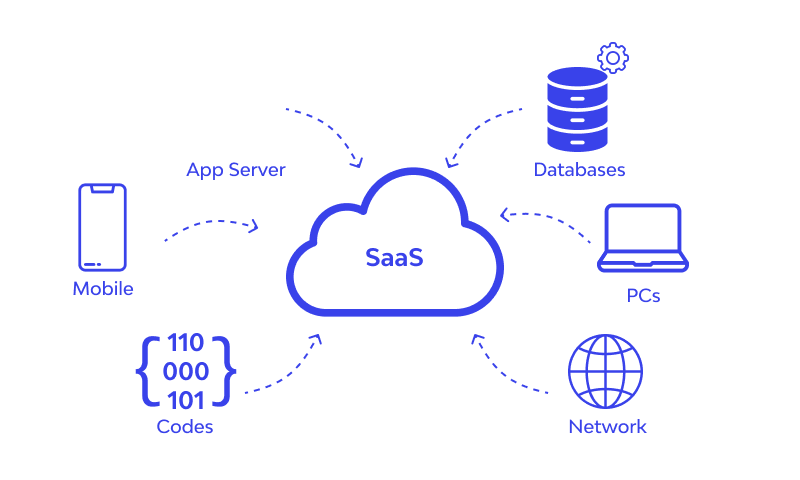"From Concept to Launch: The Ultimate Step-by-Step Guide to Building a SaaS Product"
 Aniket Dhaygude
Aniket Dhaygude
Building a Software as a Service (SaaS) product can seem like a monumental task. However, with the right roadmap, it transforms into an exciting and achievable journey. This comprehensive guide will take you through the essential steps to bring your SaaS idea to life, ensuring your product not only survives but thrives in the competitive market. Buckle up and get ready to turn your dream into a reality!
1. Ideation and Market Research
Identify a Problem: Every successful SaaS product starts with solving a real problem. Begin by identifying a gap or pain point in the market. Conduct surveys, interviews, and analyze industry trends to understand what users need.
Validate Your Idea: Before diving into development, validate your idea. Create a minimum viable product (MVP) or a simple prototype and gather feedback from potential users. This step saves time and resources by ensuring there is a demand for your solution.
2. Define Your Value Proposition
Unique Selling Point (USP): Determine what sets your SaaS product apart from competitors. This could be a unique feature, better user experience, or cost efficiency. Your USP will be the cornerstone of your marketing strategy.
Target Audience: Identify your target audience. Understand their demographics, preferences, and pain points. This helps tailor your product features and marketing efforts to attract the right customers.
3. Planning and Strategy
Business Model: Choose a business model that suits your product and market. Common SaaS models include subscription-based, freemium, and pay-as-you-go. Consider factors like pricing strategy, customer acquisition costs, and revenue projections.
Technical Stack: Select the right technology stack. This includes choosing the programming language, frameworks, and tools that will best support your product’s functionality and scalability.
Project Roadmap: Develop a detailed project roadmap. Break down the development process into milestones and set achievable goals. This keeps the project on track and ensures timely delivery.
4. Design and Development
User Experience (UX) Design: Focus on creating an intuitive and user-friendly interface. Invest in good UX design to ensure users can navigate your product easily and efficiently. Conduct usability testing to refine the design.
Backend Development: Build a robust backend that can handle your product’s operations. Ensure your infrastructure is scalable to accommodate growth. Implement secure authentication, data storage, and processing.
Frontend Development: Develop a responsive and interactive frontend. Use modern web technologies to create a seamless experience across different devices and browsers.
Integration and APIs: Integrate third-party services and APIs to enhance your product’s functionality. This could include payment gateways, analytics tools, or email marketing services.
5. Testing and Quality Assurance
Automated Testing: Implement automated testing to catch bugs and issues early in the development process. This includes unit tests, integration tests, and end-to-end tests.
Manual Testing: Conduct thorough manual testing to identify usability issues and ensure the product works as intended. Gather feedback from beta testers and make necessary improvements.
Security Testing: Perform security testing to protect user data and ensure compliance with regulations like GDPR or HIPAA. This includes vulnerability assessments and penetration testing.
6. Deployment and Launch
Continuous Integration and Deployment (CI/CD): Set up a CI/CD pipeline to automate the deployment process. This ensures that new features and updates are rolled out seamlessly.
Hosting and Infrastructure: Choose a reliable hosting provider that can scale with your product. Consider using cloud services like AWS, Google Cloud, or Azure for their flexibility and scalability.
Launch Plan: Develop a launch plan that includes marketing strategies, PR campaigns, and outreach efforts. Create a buzz around your product and attract early adopters.
7. Post-Launch and Growth
Customer Support: Provide excellent customer support to address user queries and issues promptly. This builds trust and fosters customer loyalty.
Feedback Loop: Establish a feedback loop to gather user insights and continuously improve your product. Use tools like surveys, in-app feedback, and analytics to understand user behavior.
Scaling and Optimization: As your user base grows, focus on scaling your infrastructure and optimizing performance. Monitor metrics like uptime, response time, and user engagement to ensure a smooth experience.
Marketing and Sales: Invest in marketing and sales efforts to drive growth. Use strategies like content marketing, social media, SEO, and paid advertising to reach a wider audience.
Conclusion
Building a SaaS product is a journey filled with challenges and rewards. By following this step-by-step guide, you’ll be equipped to navigate the complexities and bring your vision to life. Remember, the key to success lies in understanding your users, delivering value, and continuously iterating on your product. So, roll up your sleeves and get ready to build something amazing that no one can ignore!
Subscribe to my newsletter
Read articles from Aniket Dhaygude directly inside your inbox. Subscribe to the newsletter, and don't miss out.
Written by

Aniket Dhaygude
Aniket Dhaygude
👨💻 Freelance Developer | UI/UX Enthusiast | Tech Blogger Transforming ideas into engaging digital experiences. I specialize in front-end development, UI/UX design, and creating dynamic web apps. Let's build something amazing together! 🚀